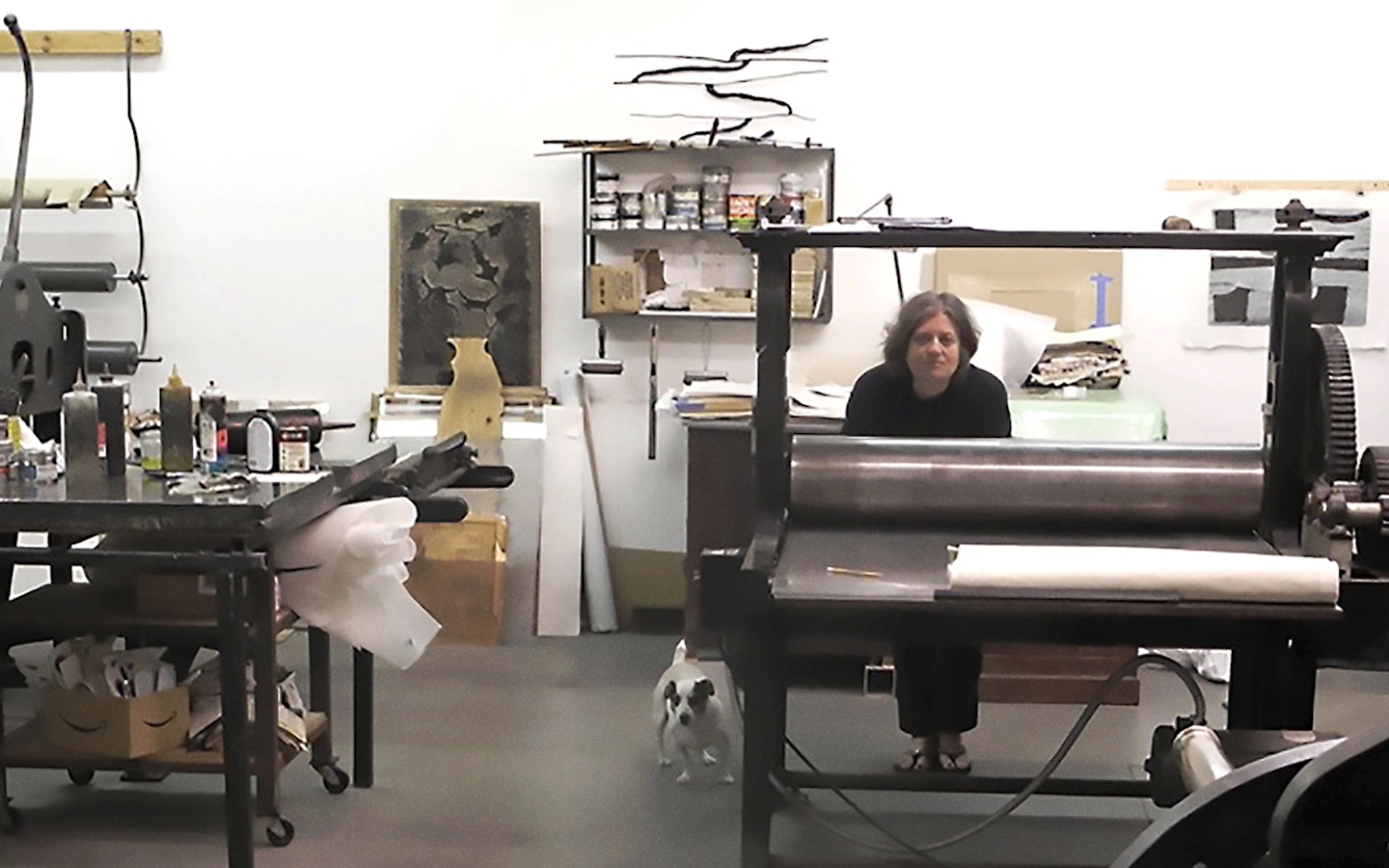Trace Monotypes with Erika Schneider
- $40
- August 15, 2020
- 10:00 AM - 12:00 AM EDT
Live from Tampa, United States
On Saturday, August 15, at 10:00 AM EDT, join new VAWAA artist Erika Schneider, a master printer in intaglio, lithography, relief printing, and monotype. She studied, lived, and worked in Paris for 20 years before moving back to the United States. Erika has collaborated with artists such as Keith Haring, Roberto Enchurien Matta, Jean Dubuffet, Pierre Alechinsky, Beverly Pepper, Georg Baselitz, Chuck Close, Jonathan Horowitz and Jane Hammond.
In true VAWAA spirit, she believes in finding things you suck at to keep you humble as you figure out how to master them.
In this session with the fearless experimenter, we'll learn how to create trace monotypes. A monotype is a single impression from a handmade image made on a plexiglass, glass or metal plate. It is a one-of-a-kind print. Frequently referred to as a painterly print, the process allows for direct application of ink onto the surface of the plate, often creating painterly textures. The Monotype process dates back to the 17th century as artists began to draw onto inked plates to sketch out images. Later this process was used to add color to an inked plate to embellish the image and make it more unique. The trace monotype using water-based relief ink makes it a simple process to do at home whether you have an artistic background or not.
Limited to 20 participants.
Joining us from a different time zone? Be sure to convert the time.
Those who attend the live session can purchase the recording at an additional fee.
What you'll need
- A high-resolution (not blurry) 8x10in print of a black-and-white portrait or landscape
- Several sheets of tracing paper
- Thin printing paper like computer paper or newsprint. For better quality, you can use Japanese printing paper (pad or sheets), Kitakata, or a combo pack.
- Water-based relief printing ink - one or several colors or a set
- Retarder to prevent ink from drying too quickly
- Brayer
- 2 9x12in pieces of plexiglass or acrylic sheets
- Large acetate sheet you can cut into 2 pieces
- Ball point pens, gel pens and pencils (2b, 4b, 8b) to make different marks
- Brushes for touch up and/or embellishment (optional)
- Paper towels
- Water
- Old newspapers to protect your work surface
- Plastic spoons and knives for mixing and spreading the ink
How to join
We'll be hosting this VAWAA Online on Zoom. You'll receive an email with link and details to join a few hours before it begins.
Sessions are ticketed to support artists, makers and our small team. If you’re experiencing financial hardship, please reach out. We may have a generous participant who has paid it forward & would ask that you pay the love forward by sharing online sessions with 3 new friends.
